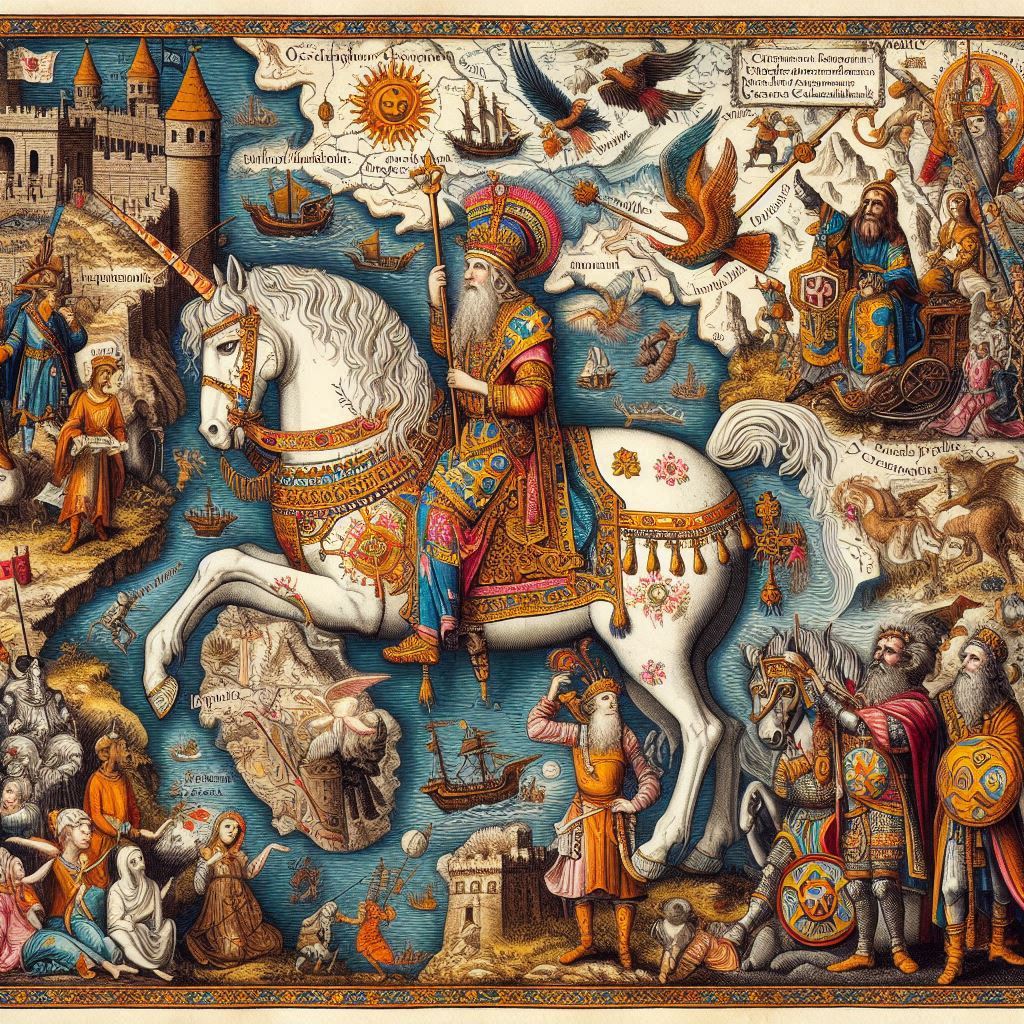
THE year was 1144 and in Europe the News was grim. The Siege of Edessa had swayed in favor of the Saracen invaders. Situated in the fertile plain of Upper Mesopotamia, the County of Edessa had been established by King Baldwin I of Jerusalem in 1098, and though it was the first Crusader state to be founded, it was also the first to fall.
It was Raymond of Poitiers, Prince of Antioch, who broke the story. His father William IX, Duke of Aquitaine, had earlier been a leader of the Crusade of 1101, and now, the Principality of Antioch, yet another Crusader State, was in danger of sharing Edessa’s fate. Already frustrated by his having to pay homage to the Byzantine Emperor, Raymond dispatched a delegation to the papal court at Viterbo, Italy, seeking spiritual aide and military muscle.
At the time of their arrival, Pope Eugene III, had only recently been elected leader of the Papal States, in fact on the 15 of February 1145, conveniently the very day that his predecessor, Lucius II, was killed by a “heavy stone” thrown at him after taking the offensive against the Roman Senate. Born Bernardo Pignatelli, or possibly Paganelli, though everyone knew him as Bernardo da Pisa, Eugene III apparently owed his elevation to the fact that no one was eager to accept an office, and also, because the election was conveniently held on safe Frangipani territory. The Frangipani’s held immense political power during the First Crusade. It is said that they had the power to sway elections, remove popes. They played a significant part in the struggle between Pope Gregory VII and Holy Roman Emperor Henry IV, briefly governed Rome from 1107 to 1108, and a little later down the road, Dante descended from them. Then again, the fact that Eugene III was a friend and pupil of Bernard of Clairvaux, co-founder of the Knights Templar, and a major leader in the reformation of the Benedictine Order through the nascent Cistercian Order, probably had something to do with it.
Included in Raymond’s delegation was Hugh, Bishop of Gibellum, though today it is known as Jabala in Syria. Hoping to counter the despairing report of Edessa’s fate, Hugh told the Pope about a man name Prester John. This great Christian king, he said, ruled over a far-eastern country resplendent in silver and gold. It was fed by a river flowing from Paradise and inhabited by satyrs and wild men, unicorns and giants, pigmies, one-eyed cyclops, dogmen, and even the phoenix. John wasn’t simply a king though. He was a priest. More like a Priest-King, a lineal descendant of the Magi who had visited the Christ child. Not only that, but many kings, 72 countries in number, paid homage to him. His enormous wealth was demonstrated by the fact that he carried a scepter of pure emeralds.
Though Edessa had fallen, reports had broken through of John’s victory over the Saracen kings of Media and Persia. Prester John had emerged victorious from the terrible battle that lasted three days and, having already stormed their capital at Ecbatana, intended to proceed to the Kingdom of Jerusalem, by which aid might be given to the failing Crusader State, thereby securing Christendom once and for all time. There was only one catch. Prester John had difficulties crossing the swollen Tigris River. If only they would hasten to Jerusalem. Surely, he would arrive in time to back their campaign.
Hugh’s report was first recorded by Odo of Deuil, Bishop of Freising, Germany, who in turn, was a confidant of the French abbot and statesman Suger, and Suger, if you haven’t been made aware, is considered by many to be the father of Gothic architecture. Oh, the tangled web that is weaved, but I digress. Odo was a News writer and a propagandist. During the Second Crusade, he served as the personal chaplain of King Louis VII of France, being sure to document the entire War, from their march to Antioch to its explosive climax at Damascus. But I’ve already gotten ahead of myself, because it was through Odo and his publication of ‘Chronicon’ in 1145, the same year as Raymond’s delegation, that the world first heard about Prester John. In little time, tracks would be made, and News guzzlers everywhere in the Papal States would be reading of the mystical king who was currently in route to support them.
The Second Crusade was announced by the ruler of the Papal States two years later, in 1147. Louis VIII of France and Conrad III of Germany, among a host of other European nobles, answered his call. The two armies marched separately across Europe, crossing into Byzantine territory to Anatolia, modern Turkey, where both were defeated by the Seljuk Turks. In response, Odo, in league with a host of various Syriac Christian News outlets, claimed that the Byzantine Emperor Manuel I Komnenos had secretly ordered the Turks to attack them, thereby hindering the Crusaders progress to Jerusalem. Eventually, Louis and Conrad reached Jerusalem with what remained of their armies, and in 1148, an ill-advised attack on Damascus resulted in their retreat. For western Christendom, the Second Crusade ended in misery. Prester John never arrived with his supernatural army as Papal Intel had promised, and for the longest time, nobody knew what became of him.
But then in 1165, nearly twenty years after the Crusader’s humiliating defeat at Damascus, any lingering doubts as to the Priest King’s existence would be dispelled when Byzantine Emperor Manuel Komnenos received a letter. It was addressed from the fabulous Prester John. And this is what it said.
[NEW 6/17/24] The Legend of Prester John
TUC Monthly Widow Ministry Fund: Patreon Support
YouTube channel: The Unexpected Cosmology.
One Time and Additional Support: GoFundMe
Go here for all Article Updates | The Unexpected Cosmology
Go here for a list of my papers: Archives | The Unexpected Cosmology